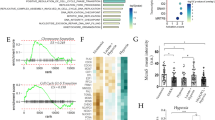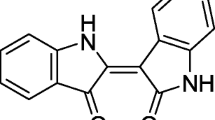Summary
Epithelial-to-mesenchymal transition (EMT) plays a critical role in cancer metastasis, and is relevant to the inflammatory microenvironment. Lipopolysaccharide (LPS), a cell wall constituent of gram-negative bacteria, has been reported to induce EMT of cancer cells through TLR4 signal. We previously reported that LPS promoted metastasis of mesenchymallike breast cancer cells with high expression of cyclin D1b. However, the role of cyclin D1b in LPS-induced EMT has not been fully elucidated. In the present study, we described that cyclin D1b augmented EMT induced by LPS in MCF-7 breast cancer cells. Cyclin D1b markedly amplified integrin αvβ3 expression, which was further up-regulated under LPS stimulation. Our results showed ectopic expression of cyclin D1b promoted invasiveness of epithelial-like MCF-7 cells under LPS stimulation. Additionally, LPS-induced metastasis and EMT in MCF-7-D1b cells might depend on αvβ3 expression. Further exploration indicated that cyclin D1b cooperated with HoxD3, a transcription factor promoting αvβ3 expression, to promote LPSinduced EMT. Knockout of HoxD3 repressed LPS-induced EMT and αvβ3 over-expression in MCF-7 cells with high expression of cyclin D1b. Specifically, all these effects were in a cyclin Dla independent manner. Taken all together, LPS up-regulated integrin αvβ3 expression in MCF-7 cells with high expression of cyclin D1b and induced EMT in breast cancer cells, which highlights that cyclin D1b may act as an endogenous pathway participating in exogenous signal inducing EMT in breast cancer cells.
Similar content being viewed by others
References
Chambers AF, Groom AC, MacDonald IC. Dissemination and growth of cancer cells in metastatic sites. Nat Rev Cancer, 2002,2(8):563–572
Oyanagi J, Ogawa T, Sato H, et al. Epithelialmesenchymal transition stimulates human cancer cells to extend microtubule-based invasive protrusions and suppresses cell growth in collagen gel. PLoS One, 2012,7(12):e53209
Sarrio D, Rodriguez-Pinilla SM, Hardisson D, et al. Epithelial-mesenchymal transition in breast cancer relates to the basal-like phenotype. Cancer Res, 2008,68(4):989–997
Condeelis J, Segall JE. Intravital imaging of cell movement in tumours. Nat Rev Cancer, 2003,3(12):921–930
Guo J, Chen L, Luo N, et al. LPS/TLR4-mediated stromal cells acquire an invasive phenotype and are implicated in the pathogenesis of adenomyosis. Sci Rep, 2016,6:21416
Mehmeti M, Allaoui R, Bergenfelz C, etal. Expression of functional toll like receptor 4 in estrogen receptor/progesterone receptor-negative breast cancer. Breast Cancer Res, 2015,17:130
Hansen MT, Forst B, Cremers N, et al. A link between inflammation and metastasis: serum amyloid A1 and A3 induce metastasis, and are targets of metastasisinducing S100A4. Oncogene. 2015, 34(4):424–35
Gonzalez-Reyes S, Marin L, Gonzalez L, et al. Study of TLR3, TLR4 and TLR9 in breast carcinomas and their association with metastasis. BMC Cancer, 2010, 10:665
Liao SJ, Zhou YH, Yuan Y, et al. Triggering of Toll-like receptor 4 on metastatic breast cancer cells promotes avb3-mediated adhesion and invasive migration. Breast Cancer Res Treat, 2012, 133(3):853–863
Wu FH, Luo LQ, Liu Y, et al. Cyclin D1b splice variant promotes αvβ3-mediated adhesion and invasive migration of breast cancer cells. Cancer Lett, 2014, 55(1):159–167
Millar EK1, Dean JL, McNeil CM, et al. Cyclin D1b protein expression in breast cancer is independent of cyclin D1 a and associated with poor disease outcome. Oncogene, 2009,28(15):1812–1820
Fang MS, Li X, Qian H, et al. ω-3PUFAS prevent MK-801-induced cognitive impairment in schizophrenic rats via the CREB/BDNF/TrkB pathway. J Huazhong Univ Sci Technolog Med Sci, 2017,37(4):491–495
Desgrosellier JS, Cheresh DA. Integrins in cancer: biological implications and therapeutic opportunities. Nat Rev Cancer, 2010,10(l):9–22
Pilch J, Habermann R, Felding-Habermann B. Unique ability of integrin alpha (v) beta 3 to support tumor cell arrest under dynamic flow conditions. J Biol Chem, 2002,277(24):21930–21938
Gong W, Liu Y, Huang B, et al. Recombinant CBDHepII polypeptide of fibronectin inhibits alphavbeta3 signaling and hematogenous metastasis of tumor. Biochem Biophys Res Commun, 2008,367(1): 144–149
Rolli M, Fransvea E, Pilch J, et al. Activated integrin alphavbeta3 cooperates with metalloproteinase MMP-9 in regulating migration of metastatic breast cancer cells. Proc Natl Acad Sci USA, 2003,100(16):9482–9487
Camorani S, Crescenzi E, Gramanzini M, et al. Aptamer-mediated impairment of EGFR-integrin avβ3 complex inhibits vasculogenic mimicry and growth of triple-negative breast cancers. Sci Rep, 2017,7:46659
Wierstra I. Cyclin Dl/Cdk4 increases the transcriptional activity of FOXMlc without phosphorylating FOXMlc. Biochem Biophys Res Commun, 2013,431(4):753–759
Lamb J, Ramaswamy S, Ford HL, et al. A mechanism of cyclin D1 action encoded in the patterns of gene expression in human cancer. Cell, 2003,114(3):323–334
Ohta H, Hamada J, Tada M, et al. HOXD3-overexpression increases integrin alpha v beta 3 expression and deprives E-cadherin while it enhances cell motility in A549 cells. Clin Exp Metastasis, 2006,23(7-8):381–390
DeNardo DG, Johansson M, Coussens LM. Immune cells as mediators of solid tumor metastasis. Cancer Metastasis Rev, 2008,27(1): 11–18
Jing YY, Han ZP, Sun K, et al. Toll-like receptor 4 signaling promotes epithelialmesenchymal transition in human hepatocellular carcinoma induced by lipopolysaccharide. BMC Medicine, 2012,10:98
Li H, Li Y, Liu D, et al. LPS promotes epithelialmesenchymal transition and activation of TLR4/JNK signaling. Tumour Biol, 2014,35(10):10429–10435
Micalizzi DS, Farabaugh SM, Ford HL. Epithelialmesenchymal transition in cancer: parallels between normal development and tumor progression. J Mammary Gland Biol Neoplasia, 2010,15(2):117–134
Tran DD, Corsa CA, Biswas H. Temporal and spatial Cooperation of Snail 1 and Twist 1 during epithelialmesenchymal transition predicts for human breast cancer recurrence. Mol Cancer Res, 2011,9(12): 1644–1657
Shah PP, Fong MY, Kakar SS. PTTG induces EMT through integrin aVβ3-focal adhesion kinase signaling in lung cancer cells. Oncogene, 2012,31(26):3124–3135
Mori S, Kodaira M, Ito A, et al. Enhanced expression of integrin avβ3 induced by tgf-β is required for the enhancing effect of fibroblast growth factor 1 (FGF1) in TGF-β-induced epithelial-mesenchymal transition (EMT) in mammary epithelial cells. PLoS One, 2015,10(9):e0137486
Author information
Authors and Affiliations
Corresponding author
Additional information
This study was supported by National Natural Science Foundation of China (No. 81702920) and China Postdoctoral Science Foundation (Nos. 2016M602311, 20161"90693, 2015M570642).
Rights and permissions
About this article
Cite this article
Luo, Bp., Luo, J., Hu, Yb. et al. Cyclin D1b Splice Variant Promotes αvβ3-mediated EMT Induced by LPS in Breast Cancer Cells. CURR MED SCI 38, 467–472 (2018). https://doi.org/10.1007/s11596-018-1902-5
Received:
Revised:
Published:
Issue Date:
DOI: https://doi.org/10.1007/s11596-018-1902-5




